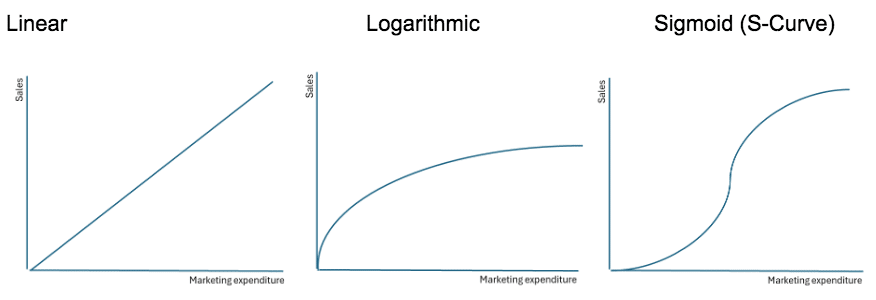
Animal care, whether the service is veterinary, boarding, grooming, daycare, or training is a hyper-local business. By that we mean it is a business whose key factors in its revenue model are the place and time. It makes the majority of its revenue in the same place at the same times and serves generally the same area. Many small businesses are hyper-local businesses and hyper-local businesses are responsible for millions of jobs nationwide and are important in their community. Even though they are generally known to those in the communities in which they serve, they still rely upon and can utilize the tenets of marketing to improve their outcomes.
Marketing professionals will have likely learned about the Seven Ms as a framework for decision-making. Those seven Ms are:
1. Markets: who should I try to reach?
2. Mission: what is my goal / what am I trying to achieve?
3. Message Content: what should I try to tell them?
4. Media Strategy: how do I reach them?
5. Message Design: what should the message look like?
6. Money: how much should I spend to accomplish the mission?
7. Measurement: how will a measure success, or were steps 1-6 worth it?
How much do you need to spend to execute your advertising mission, now that you have the goal formulated, the audience segmented, the message crafted, and the design made up?
To start, picking the budget is impossible if you haven’t done the steps above. Without proper research and planning, marketers will have no choice but to opt for one of the common heuristic methods:
Heuristic Methods:
- Competitor Parity: Find out what your competitors or like businesses are doing with respect to budgets and match their spend. Industry benchmarks exist for average advertising budgets and online forums can be scanned to gather intelligence. Agency partners will have an idea of the range of possibilities in spending.
- % of Revenue: Take a % of historical or projected revenue and allocate a fixed percentage to your marketing activities. Again, agency partners, online forums, and industry benchmarks exist for this method.
- Tossed Salad Approach: allocate whatever is “leftover” in the budget each month to throw at the marketing effort.
The heuristic methods are for those that recognize that marketing is important, but lack the resources (time, money, know-how) to effectively manage it.
Objective and Task Method:
Part art, part science the objective and task method considers the objective (mission) and creates the cost strategy based on what would need to be true in order to achieve the mission. The objective and task method is grounded in an understanding of the customer journey and assumptions will need to be made, and revisited, in order for it to succeed. Consider:
- Typical Customer journey
-
- Customer has an upcoming trip and is looking for boarding for their pet
- Customer realizes they need to have updated vaccinations in order to board the pet
- Customer searches the internet for “veterinarian near me”
- Customer clicks through to the website, likes what they see, and choses to schedule an appointment, they make a phone call to the clinic
- The clinic answers and schedules the appointment
- The customer shows up to their appointment and is discharged
Backing up from there. To get one customer to be discharged
-
- What is the no-show / cancellation rate
- What is the missed call rate
- How many customers need to click to the website in order to convert
- How much does it cost to get a click
- How many customers do you need
Putting it all together:
-
- You need 20 new customers from paid media per month
- It costs $5 to get a click
- You need 10 clicks to get a conversion
- You answer the phone 85% of the time
- You have a no show rate for new customers of 10%
| Customers Needed | 20 |
| Clicks Needed to convert | 10 |
| Cost per Click | $5 |
| Phone call answer rate | 85% |
| No Show Rate | 10% |
| Budget Needed | $1,307.19 |
You can see through this analysis how an effective ads manager will have an impact on your cost. Improving cost per click will result in more customers or the same customers for fewer dollars. You may also note that all the proper advertising in the world won’t matter if the phone isn’t answered (or handled well) or they don’t show.
Empirical Methods and Experimentation:
For most, the objective and task method will satisfy their marketing needs, but an understanding of the empirics will improve their outcomes, most notably through experimentation. Before we get to that, let’s go through the theory.
In optimal settings, we should allocate resources to the marketing function until we match marginal benefit to marginal cost. That is to say, advertising expenditures will increase so long as the incremental dollar in expenditure is outweighed by the incremental dollar in profit. We will call these response curves or response functions. What is the response function for marketing expenditures?

Linear Response Curve: Spend more, get more sales on a 1:1 ratio. This is perhaps how some people think about expenditure and sales, but in reality, it doesn’t work that way.
Logarithmic Response Curve: Spend to get a benefit and see marginally decreasing returns from increasing investment. This is possible, but it puts too much credit to the first dollar of marketing spend.
Sigmoid (S-Curve): Get little benefit or response from smaller marketing expenditures, until an inflection point where outsizes marginal benefit to marginal cost occurs until another inflection point and decreasing marginal benefit begins. For those in medical science, these curves exist in other natural environments
In marketing, S-Curves are the empirical way to think about the marketing function.
Building your response function is difficult because, as would be expected, everyone’s response curve is different and we never know where we are on the curve. Consider two brands A and B. If Brand A reduces their marketing expenditure they will face a bigger decline in sales than Brand B because their Response Curve is far steeper.

In addition:
- Response functions are uncertain
- Your competitors impact your response function and will react to your decisions
- The response from consumers have a lag time
- Consumers are heterogeneous
- There are long-term contributions from promotion that may not be measured accurately (think customer lifetime value, not first sale)
- Experimentation is costly (in both time and money)
So instead of building our own response curves, we can use the theory to support our decision. Putting into practice, it’s generally a good idea to experiment with marketing budgets and observe an outcome. For example, consider increasing (or decreasing) marketing budgets by 20% in one month, and observe outcomes in month 2 and 3. Adjust, and do it again
Other Costs:
Aside from the budget for advertising, other costs need to be considered and incorporated into your calculations for when it comes time to assess the return on investment of a marketing strategy. When determining the cost of the program be sure to include the cost of managing the ads (if using a professional manager), the cost of print and shipping for physical media, and the cost of referrals if you’re paying a referral bonus or incorporating a discount. These costs should not be ignored from measurement.
Conclusion:
There are multiple models to choose from in order to determine the cost required to complete your mission. Incorporating data into the process and experimentation are generally great for generating better outcomes. Consider all costs when determining the cost (and effectiveness) of the marketing program.
Vetcelerator – Your Trusted Partner in Veterinary Practice Growth
At Vetcelerator, we understand the unique challenges faced by veterinary professionals. Our cutting-edge solutions are designed to streamline your operations, enhance patient care, and drive growth for your practice. With our comprehensive suite of tools and expert support, you’ll have everything you need to achieve your goals and thrive in the competitive landscape.
Visit Vetcelerator today and discover how we can help you turn your vision into reality. Let’s achieve greatness together!










